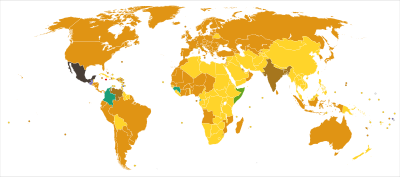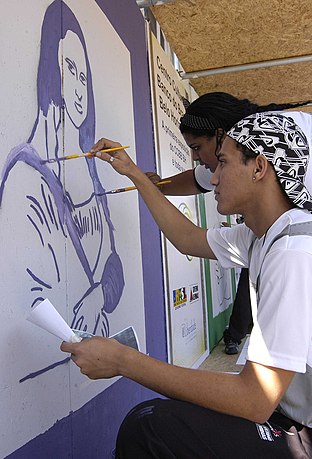共享资源:著作权规则
上传到维基共享资源的文件在「原产国」(根据伯尔尼公约的定义)和在美国都应是自由的,在其他相关国家也可能是自由的,这可以通过获得版权所有者的适当许可或进入公有领域来实现。
各種題材的著作權法規
- 主页面: 共享資源:各種題材的著作權法規。
共享資源:各種題材的著作權法規汇集了各种主题,旨在回答「我能上传...的照片/图片嗎?」
上传是![]() OK的:
OK的:
- 一般來說,您為自己拍攝的不受版權保護的主題的照片,例如風景、自然、您自己(只要您不將其用作您的個人網絡空間)、已同意您拍攝它們並讓您發佈照片。
- 您拍攝的照片或您對版權已過期(通常在作者去世70年後,但請參閱共享资源:各地著作权法规)的物品或設計製作的掃描件或影印件以了解國家/地區-國家清單)。
- 僅僅是機械掃描或影印,由其他人製作,物體或設計足夠古老以進入公共領域(通常在作者去世後70年,但請參閱共享资源:各地著作权法规為國家/地區列表)。有關可能已增強的舊圖像的掃描,請參閱共享資源:何時使用PD-scan標籤。
- 照片,無論是您自己還是其他人拍攝的,都是2D公共領域藝術作品的忠實複製品。參見共享資源:何時使用PD-Art標籤。
其他科目可能允許也可能不允許 – 請參閱共享資源:各種題材的著作權法規的標題。如果您想回答「我可以從...上傳照片/圖片嗎?」,請參閱 共享資源:各種題材的著作權法規中的網路圖像段落。另見:共享资源:原创门槛。
简易的核對清單
假设你用相机拍了一张照片、或你从某处扫描了它、或你从网络服务器下载了它,然后你想把它上传到维基共享资源。你怎么知道什么是可以的?什么是不可以的?这里有一个简单的图表,可以帮助你做出判断。一旦有了疑问,请先阅读您所在国家的相关通知。如果你仍不确定,请在Commons:Help desk或Commons:Village pump/zh上用当地语言询问。
請參閱共享資源:各種題材的著作權法規以獲取更完整的列表。
您自己的照片,是:
- 大自然(森林、天空等)
- 動物(貓、狗等)
- 昆蟲(螞蟻、甲蟲等)
- 農產品(蘋果、西紅柿等)
- 已同意發佈其圖像的人
- 您(只要您不是將此用於您的私人網站空間),但這不是其他人為您拍攝的照片(需要獲得拍攝這些照片的人的同意)
- 在美国和您所在的司法管辖区中,物品可以根据年龄而属于公共领域的是:
- 由超過70年前(最好是超過100年前)去世的建筑师建造的建筑物
- 由超過70年前(最好是超過100年前)逝世的艺术家创作并在1929之前首次发表的艺术作品
- 超過70年前(最好是超過100年前)逝世且在 1929 之前首次出版的作者所著书籍
- 由去世超過70年(最好是超過100年前)且首次出版时间早于1929的作者出版的报纸和杂志。
你自己的扫描件,是:
- 在您的司法管辖区和美国版权均已过期的材料。
- 完全由您自己创作的图片(没有任何早期资料来源,或资料来源属于公共领域)
来自网络服务器的资料:
- 在您的司法管辖区、美国和网络服务器的司法管辖区版权均已过期的材料。
不確定的,可能可以又可能不行
当上传者不拥有版权时,各种受版权保护的材料有:
- 徽标。仅允许非常简单的设计,请参见共享资源:许可协议部分的「简单设计」。
- 屏幕截图。请参见Commons:螢幕截圖部分。
照片、图画、扫描件和其他复制品:
- 汽车(只有一种颜色且没有任何广告、绘画等的汽车均可)
- 日常用品(实用设计即可)
- 书籍封面(只有非常简单的设计可以)
- 货币(取决于国家法律;请参阅共享资源:货币)
- 邮票(取决于国家法律;请参见共享資源:郵票)
- 由去世不到70年或仍在世的建筑师建造的建筑物。参见共享资源:全景自由。
- 永久性安装在公共场所的艺术作品,由去世不到70年或仍在世的艺术家创作。参见共享资源:全景自由。
- 私人住宅、家庭、博物馆的内部装饰。
- 名人。参见共享資源:可辨識的人物照片。
- 未经同意的普通人。参见共享資源:可辨識的人物照片。
- 合理使用的图片。参见共享资源:合理使用。
- 与版权材料极为相似的粉丝艺术。参见 共享资源:粉丝艺术。
- 复制受他人版权保护的物品,如以下物品:
- 人物模型、雕像和其他受版权保护的材料。参见 共享资源:衍生作品。
- 专辑、电子游戏、电影和其他商业产品的封面、海报、版权尚未到期的报纸和杂志(封面和内页)。
- 受他人版权保护的声音,如以下声音:
- 受版权保护的广播电台(节目和广告)
- 版权尚未到期的作者创作的歌词歌曲
各地著作權法規
- 主页面: 共享资源:各地著作权法规。

各国的版权法不尽相同。除非从美国上传,否则上传到共享資源的图片涉及两个或多个版权管辖区的交互作用。各个国家的法律尤其在以下几点存在差异:
- The time for which a copyright applies. In most countries, copyright expires no later than 70 years after the death of the author (p.m.a.). There may be special terms for recently published old material.
- Status of works of the government. In many (but not all) countries, documents published by the government for official use are in the public domain.
- Material applicable for copyright. In some jurisdictions, pictures of artistic work like architecture, sculptures, clothing etc. can not be used freely without the consent of the creator of the original artwork.
Almost all countries in the world are party to the Berne Convention for the Protection of Literary and Artistic Works (see here for the text). Following this convention, countries enforce copyrights from other countries, according to certain rules. One consequence of these rules is that we should always care about the laws of the country of origin of the work.
处理不确定性
当日期不明时

Assume the most recent possible date considering the subject. The photo here shows Albert Einstein and his wife Elsa. Elsa died on December 20, 1936; Albert later on April 18, 1955. Therefore, it was taken before December 20, 1936.
当地点未知时
Assume the most restrictive reasonably possible location considering the subject. In the Einstein photo here, it could be the United States, Germany, the Atlantic Ocean (assuming the Einstein couple was on board a ship) or any other country or location he reasonably could have gotten a photo taken in, but it would not likely be Nepal, for example.
当摄影师不明时
Assume the most reasonable restrictive copyright barring evidence to the contrary. That is, unless the site or source itself asserts a freer set of rights (and you have good reason to believe they are not misapplying rights they do not have) assume the photographer retained all rights he legally could in his jurisdiction.
But the Berne Convention says that photographs are in the public domain 50 years after publication if the photographer is unknown. This applies unless a country has made a specific law.
Generally, for countries with copyright terms based on the death of the author, community consensus has found that it is safe to assume that the author died no more than 50 years after creating the work in cases where the author is unknown. This is encapsulated in the template {{PD-old-assumed}}.
示例

Assume that the author of the image on the right is unknown to us, but not unknown in the copyright sense. We know that the image represents the ship Borda, which was scrapped in 1891. The image could have been taken that year by a 20-year-old man, who could die of old age in his 90s; this brings us to 1960. Assuming the normal terms for "works" apply and a 70-year long copyright term pma, the image would be covered by copyright until the 2030s. If the work was truly anonymous, then the copyright probably did not exceed 1891 + 70 = 1961, which means it is free if it was published before 1929 (or free in USA for other reasons).
Caution, not being able to find an author does not mean that the work is anonymous. It can mean that we did not search long enough or at the right place.
参见:共享资源:项目范围/预防原则.
参见
- Commons:Wikilivres – 一个类似的网站,不是由维基媒体基金会运营,但允许在加拿大公共领域提供材料,其限制比美国要少
- 查询常见问题。
- 如果你在你的讨论页放置
{{helpme}},志愿者就会尽快去联系你! - 加入#wikimedia-commons的IRC聊天频道。不了解IRC?点击这里快快加入吧!
- 前往共享资源帮助台。

